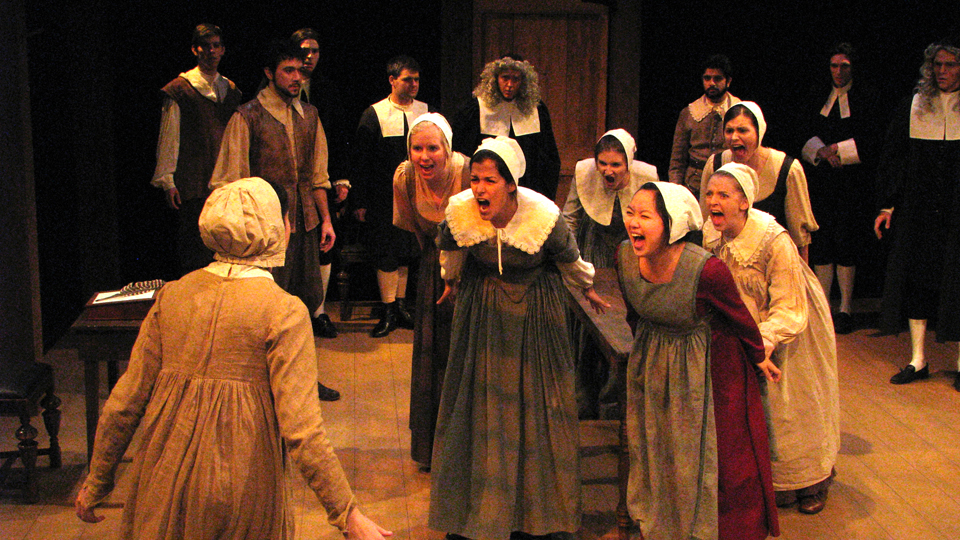I first saw Arthur Miller’s The Crucible adapted by Soulpepper a couple of years ago, and I liked it; the profoundly disturbing and thought-provoking play left me thinking for several days afterwards. Soulpepper, considered one of the top classical theatre companies in the GTA, has another thing coming with Theatre Erindale’s production of The Crucible opening last week.
Directed by Aaron Willis, the season-opening production combines a stellar cast with brilliant technical elements and one of my favourite staging configurations, leaving Soulpepper’s adaptation knee-deep in Massachusetts dust.
All the actors share a wonderful chemistry, so much so that simply watching them breathe was fascinating. Kaitlyn Alexander and Christian Tribuzio as Elizabeth Proctor and her husband John lead the play with grace and impressive stamina. Bailey Green, Eliza Martin, and Adrian Beattie (depicting Rebecca Nurse, Mary Warren, and Mr. Hale, respectively) inhabit their characters with profound honesty. Every actor deserves to be commended for the openness and freedom with which they tackled their characters, especially characters so different from themselves in age and mindset.
Some of my favourite moments were those of complete silence, when the audience was given time to truly absorb an event. One such moment is when Judge Danforth (Victor Pokinko) reads a letter delivered to him by Proctor and Mary Warren, the girl who works in his house. The moment was allowed to sit with the audience, as they, along with the other characters in the courtroom, waited to hear what would be read.
Dialogue is somewhat unevenly distributed among the characters, and consequently people are often left standing and listening while conversation unfolds around them. Those who stood silently during a scene were often the most riveting to watch, simply for their reactions.
The set and costumes perfectly illustrate the play’s setting. The thrust stage, surrounded by audience members on three sides, is framed by wooden beams that help create various indoor settings: an upstairs bedroom, a dining room and kitchen, a courthouse, a jail. Some claustrophobia accompanies this frame, since it almost denies the audience access to the play; the frame and the shape of the stage made me feel like an intruder in the private lives of the characters, as though I was seeing something I wasn’t meant to witness.
The costumes were sparse and simple, varying slightly depending on the social status of the character. All had neutral colours, which make exceptions like the judges’ black robes stand out all the more. The neutral palette also made the characters almost blend in with the stage and beams, making them indistinguishable from their surroundings. In a farming community so obsessed by which land belongs to whom and whose cows are roaming the streets untended, it’s fitting that people appear so close to their setting.
The Crucible raises moral dilemmas and ambiguities that stayed in my thoughts for days after seeing the show. This isn’t a play that can be digested lightly; on the contrary, it weighs heavily on the soul and left me a little shaky. This impact, though, is proof of a successful production. A good play, no matter how funny or morally ambiguous, should linger a little.
Theatre Erindale’s The Crucible runs until November 3.

